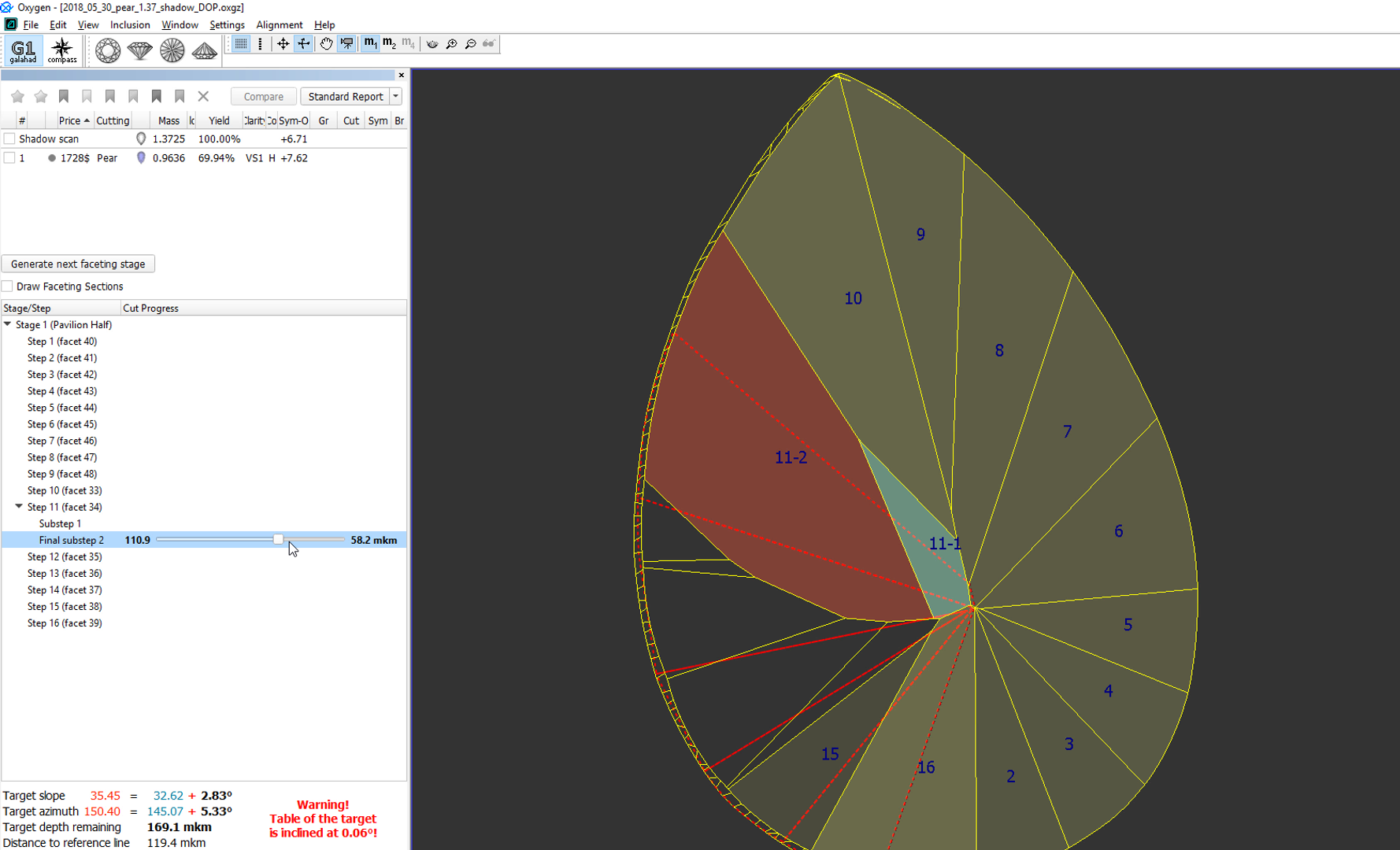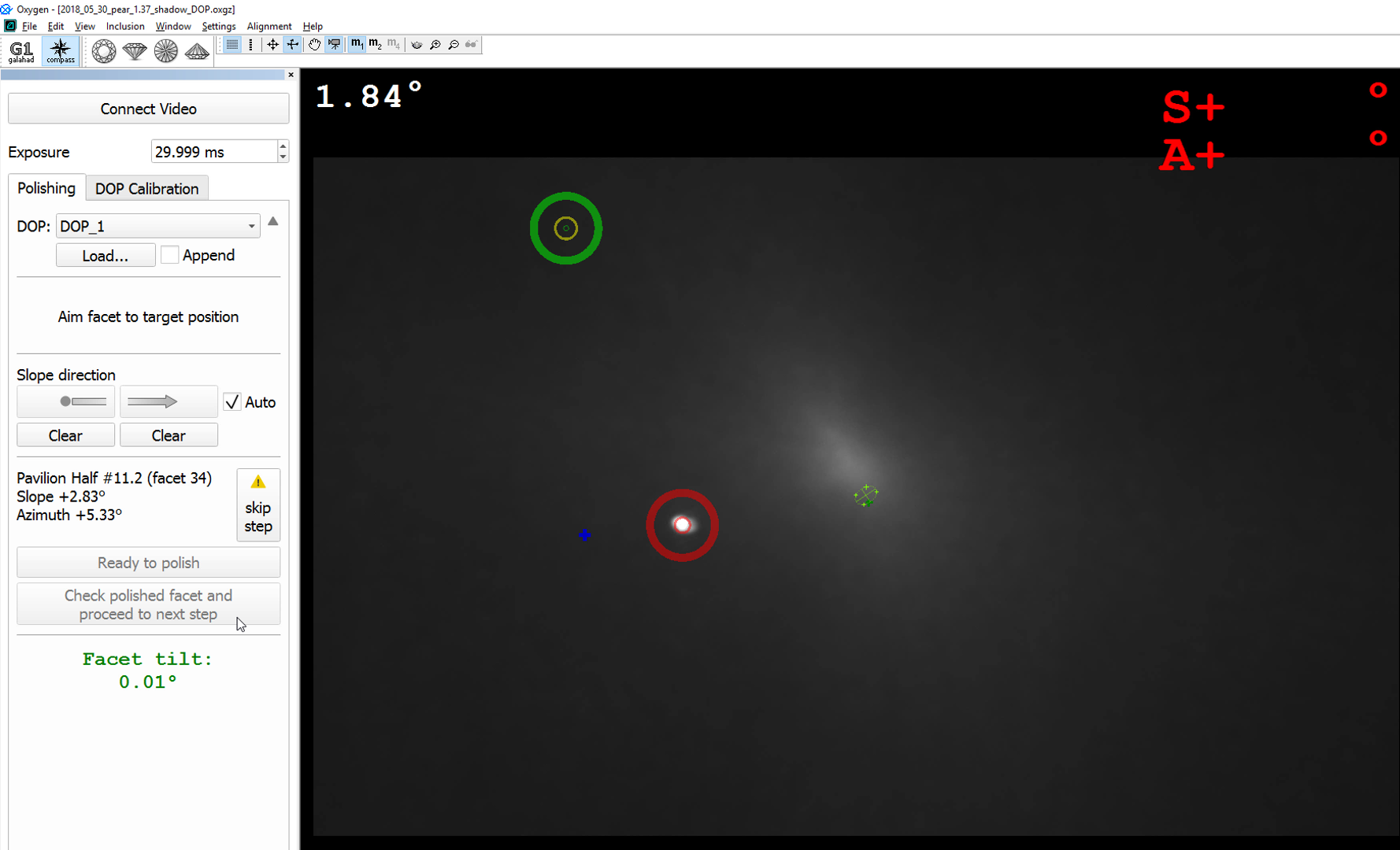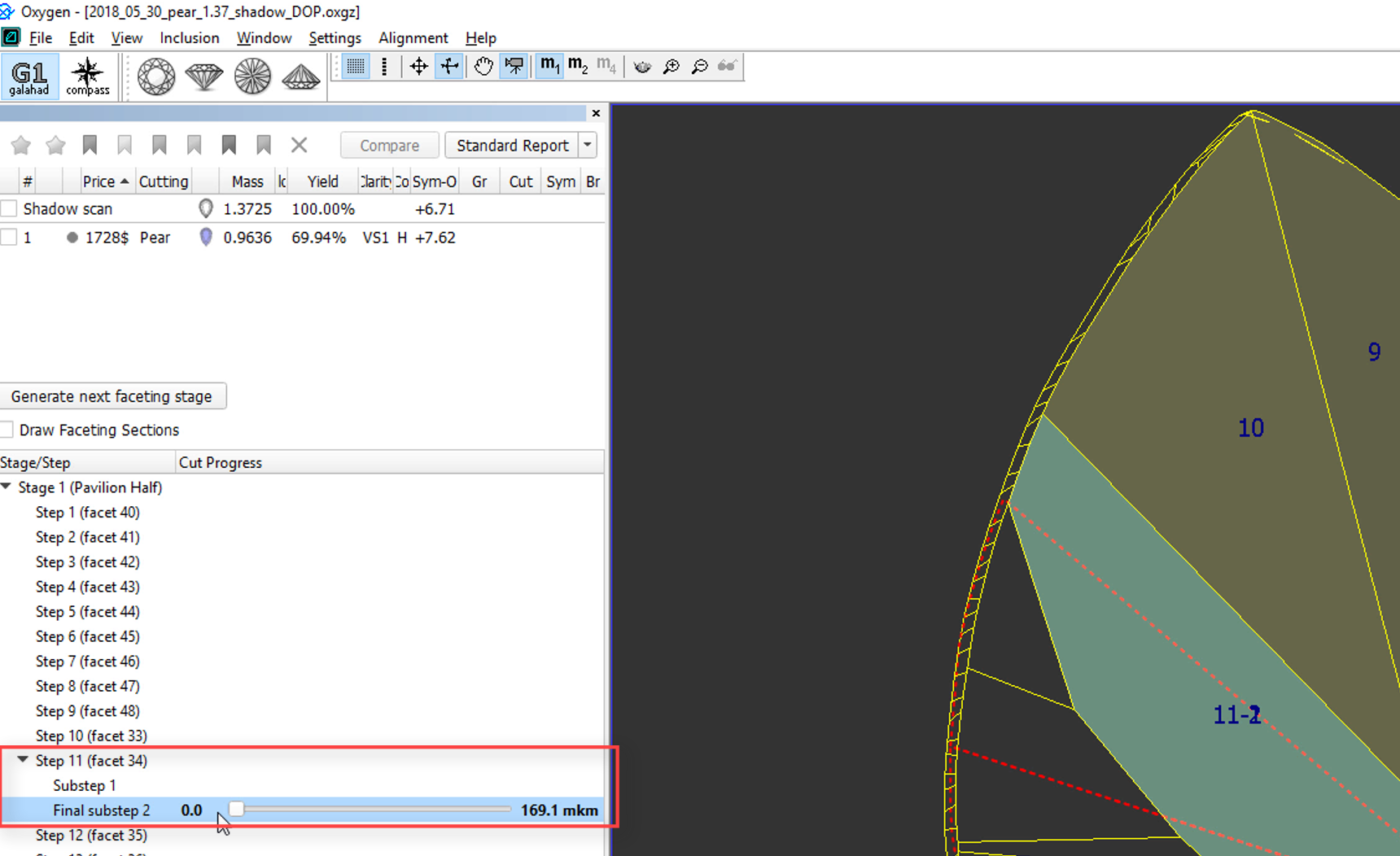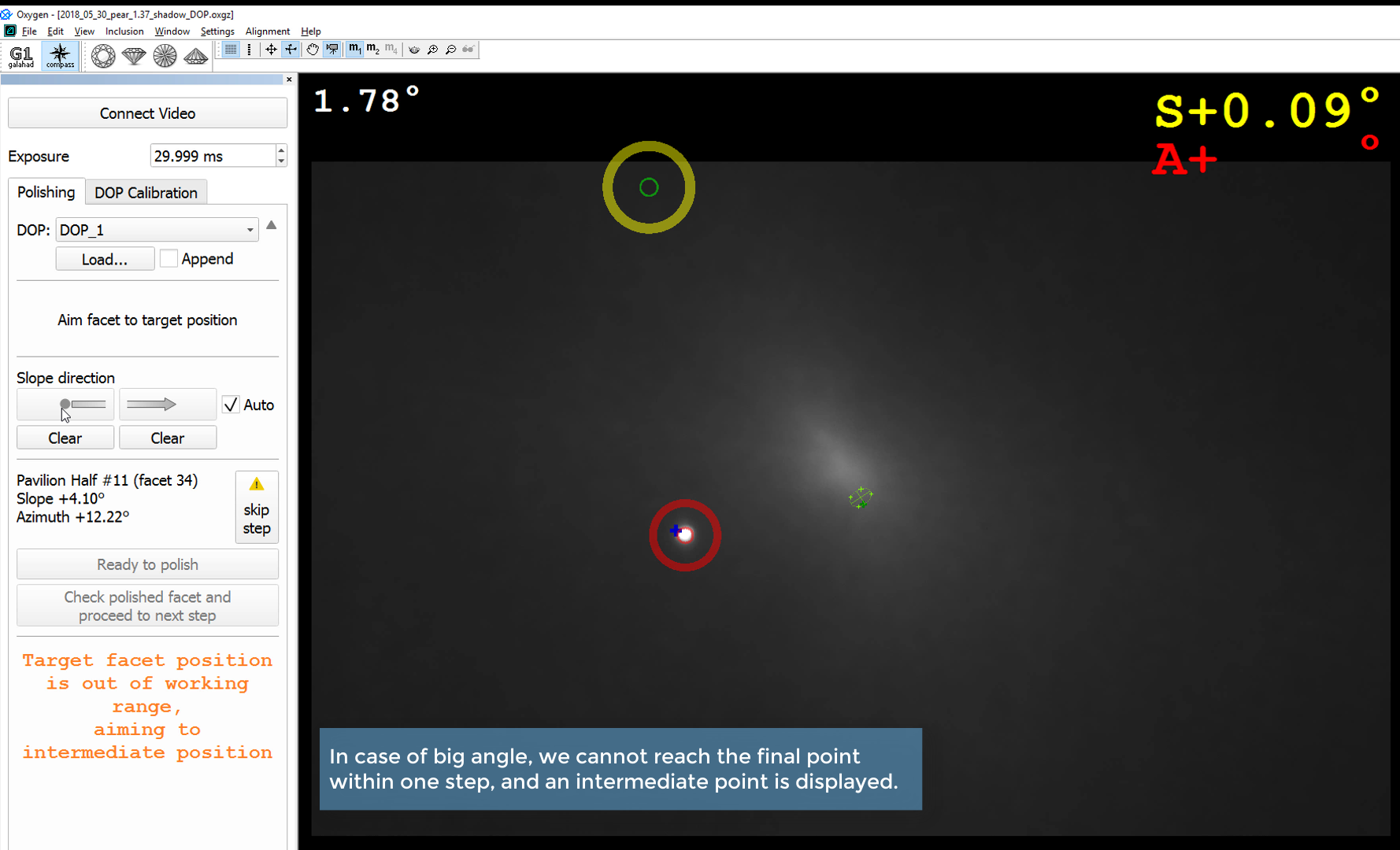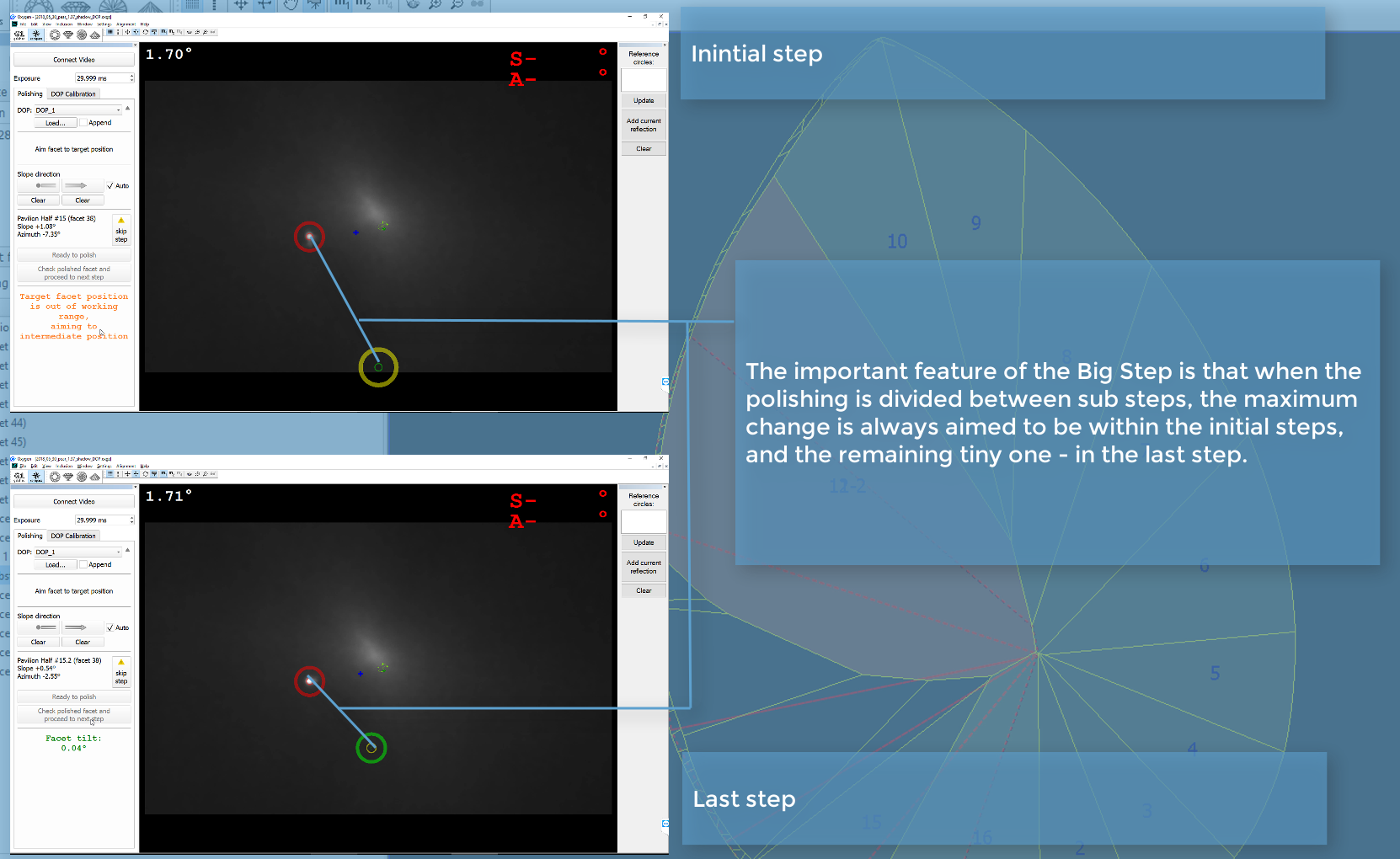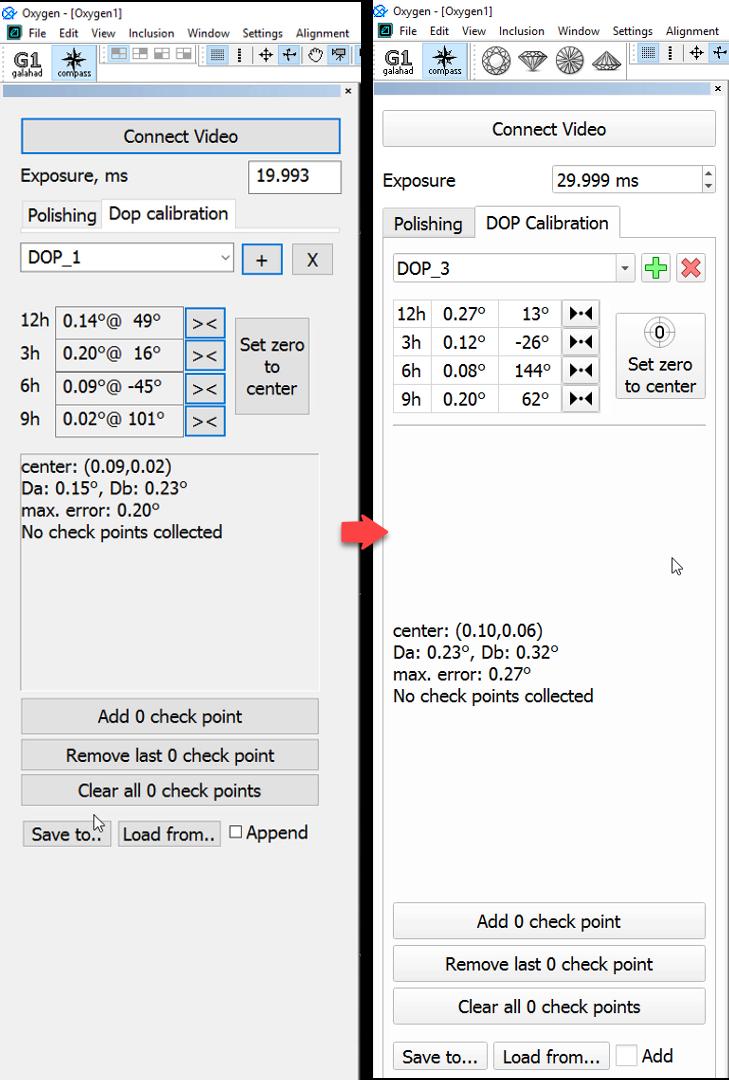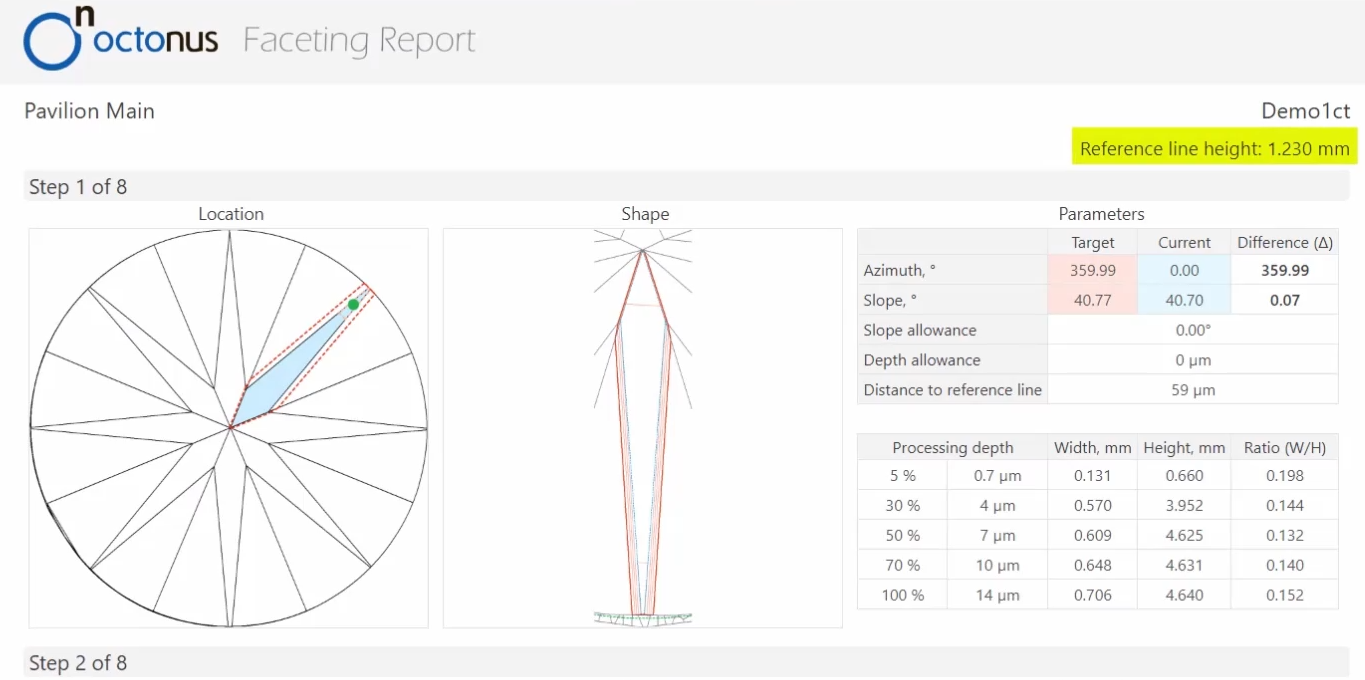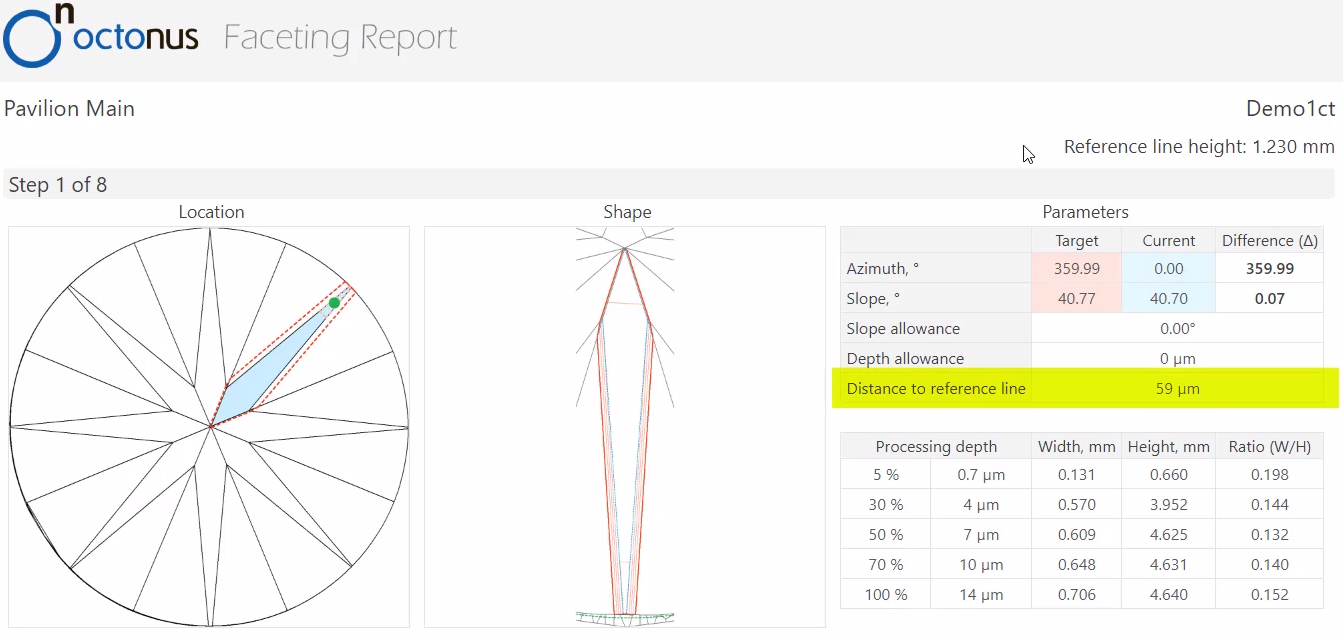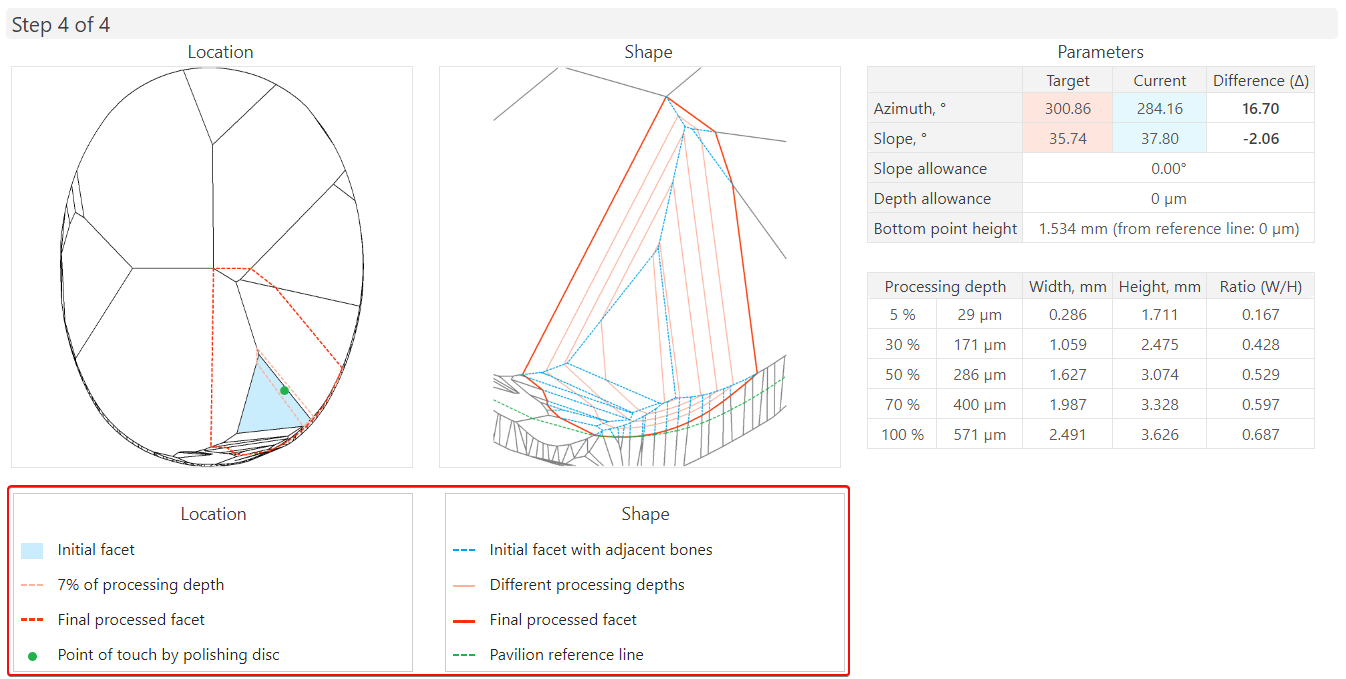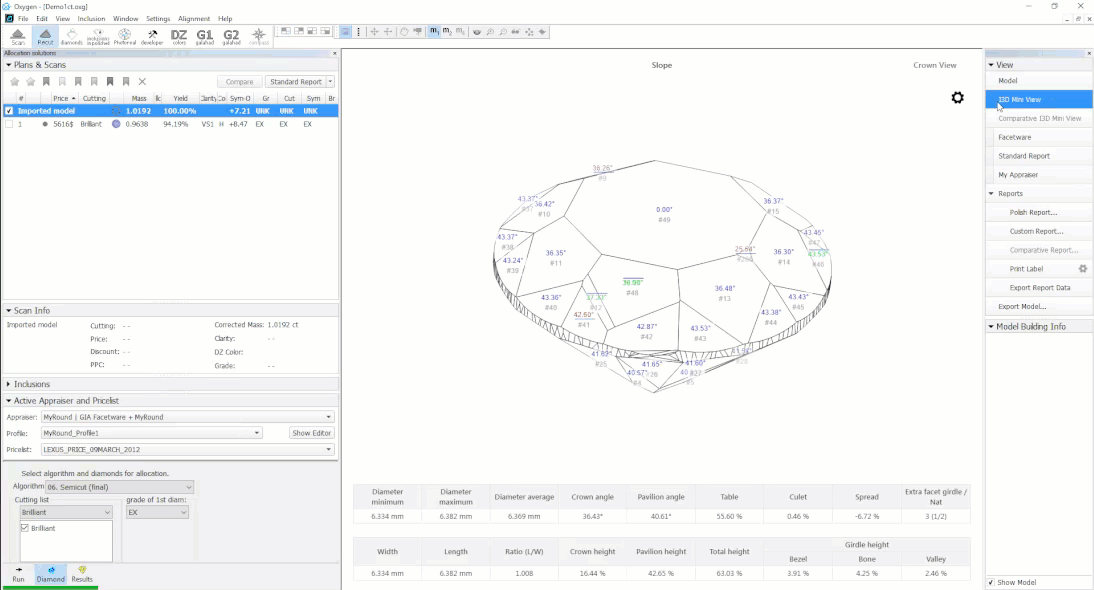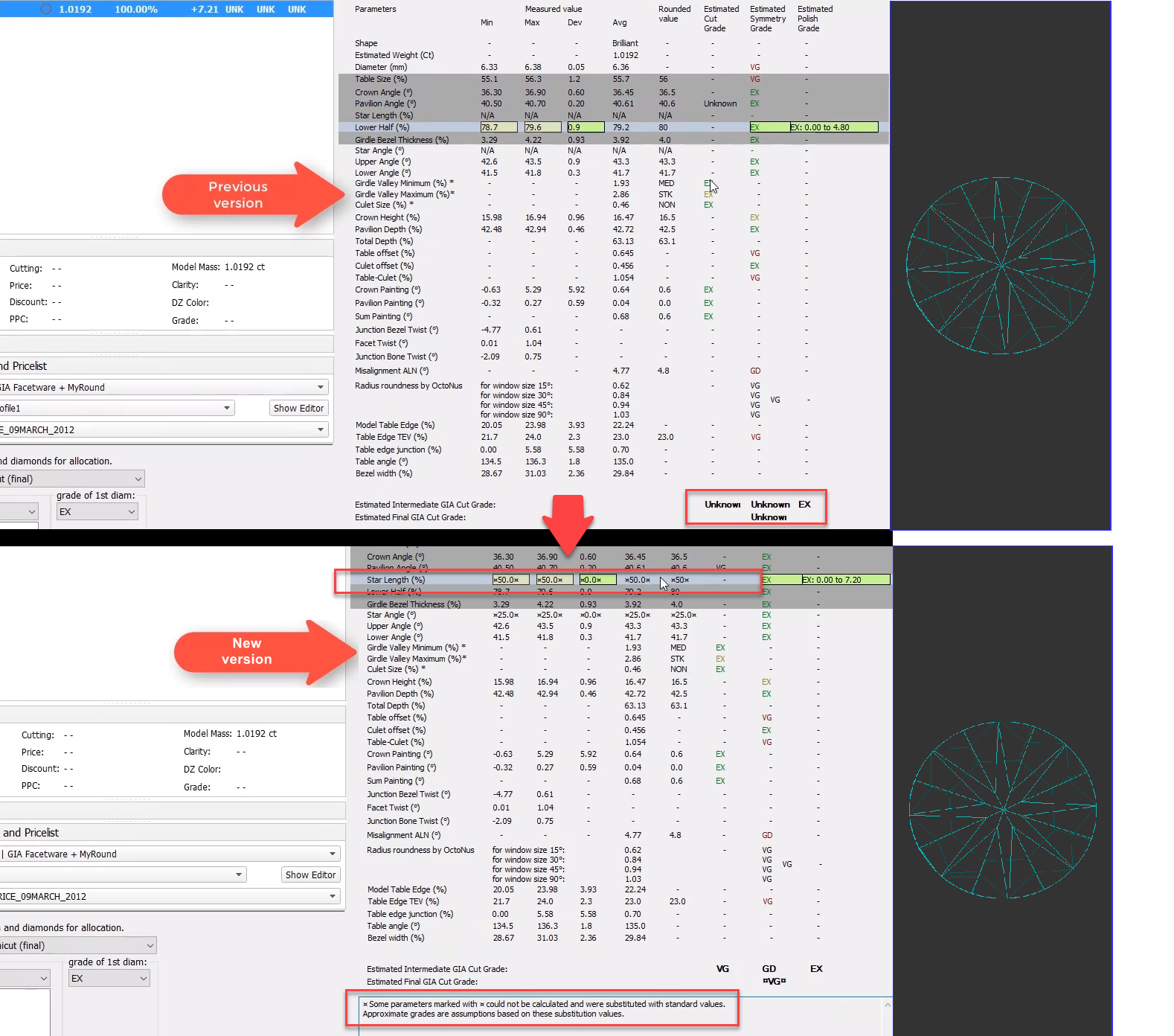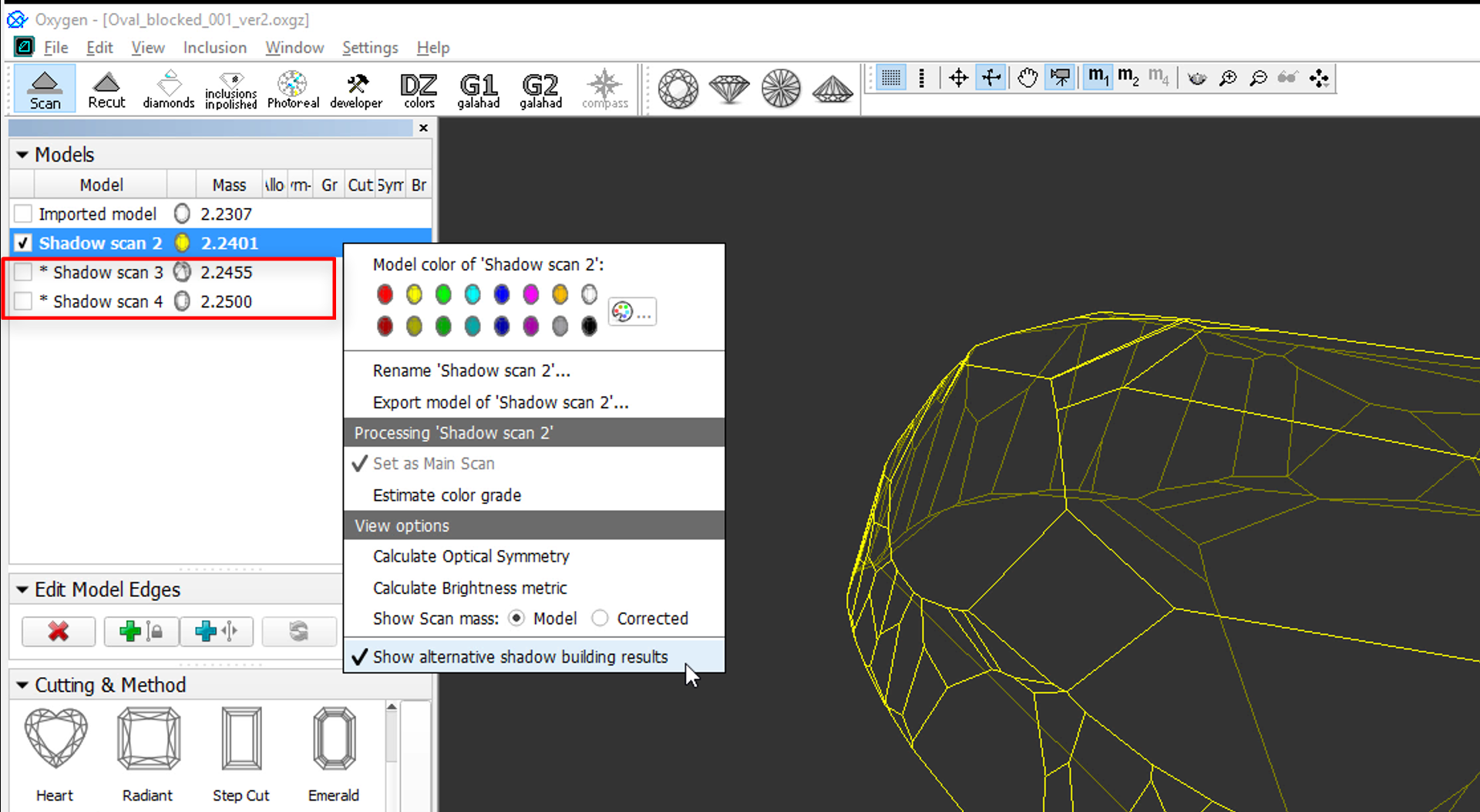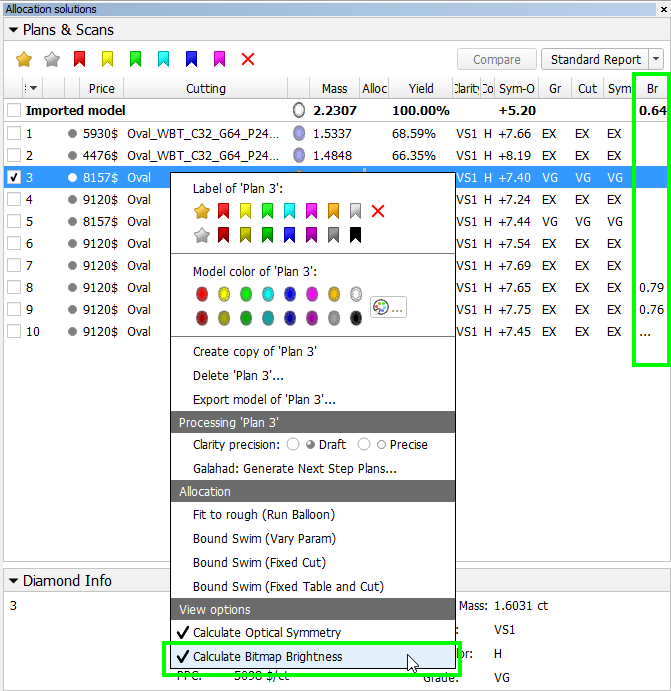...
| Info |
|---|
See also Galahad Compass introduction here. |
Galahad Compass - Big Step Feature
In Galahad Compass, the polishing steps now can be of two different types: a small step and a big step. In case if the Slope is more than 5,6° or Azimuth is more than 3.4°, this is considered to be a "big angle" and the system creates a "big step". The reason for creating a "big step" is that a difference between the current and the final angles may exceed the working range of the Compass software which means the facet glare is outside the scene. This means that in case of big angle, we cannot reach the final point within one step, and several sub-steps are created each having its own target point for Slope and Azimuth correction. From the point of view of the entire big step, these points are intermediatefield of view is limited. Because of this limitation, sometimes it is impossible to polish the facet to the target state within 1 step. In this case, the system automatically builds intermediate facets which allow polishing all the facets even if the initial semipolished stone has only one big facet.
| Multimedia | ||||
|---|---|---|---|---|
|
For the big step, two or more sub-steps can be created if necessary. When the polishing is divided between sub-steps, the maximum change is always aimed to be within the initial steps, and the remaining tiny one - in the last step.
Galahad Compass - New Look & Feel for DOP Calibration
In Galahad Compass, the DOP Calibration tab now has the new look and feel.
Faceting Report - Reference Line Calculation
For the Faceting Report, the reference line calculation algorithm is changed. For the pavilion, the reference line calculation now considers all the facets of the pavilion excluding extra facets. The line is drawn in parallel to the table on the lowest point of the lowest facet of the pavilion. In the Faceting Report, the reference line is displayed for all groups of facets of the pavilion. In the upper part of Faceting Report, the Reference line height (mm) is displayed which is the distance to the table.
Also, for each facet of the pavilion, the Distance to reference line (µm) is displayed.
In the same way, the reference line for the crown is calculated. The reference line calculation now considers all the facets of the crown.
...
For the Faceting Report, the legend is added.
Improvements in I3D Mini Views
...
Also, for I3D Mini View now the positions of the model and all solutions are synchronized which makes comparing model and different solutions more convenient.
Scanning - Improvements in Model Building
The process of building the stone model is improved.
The HP Oxygen team provides support for all cases related to the model building. If you have any troubles or questions related to HP Pacor and HP Oxygen model building, please collect the test data and send it to the HP Oxygen team. The detailed instruction on how to collect and send test data can be found in the video:
| Multimedia | ||||
|---|---|---|---|---|
|
Facetware Report - Estimating GIA Cut Grades using Standard Values
In the Facetware Report, previously the Intermediate GIA Cut Grade and Final GIA Cut Grade could not be estimated in the case if measured values for some parameters (for example, Star Length (%)) were not available - this can often occur for the semipolished stones for which not all the facets required for calculation are set. Now the system allows approximate estimation of a diamond. In case if measured values for some parameters are absent, the system will automatically substitute them with standard values. The estimation for the cut grades for the separate parameters and for the Intermediate GIA Cut Grade and Final GIA Cut Grade will be calculated basing on these standard values so that we'll never get "Unknown" value for them.
Shadow Scan - Alternative Building Results
For some cuttings, there are several applicable algorithms. If so, they all are applied and the system then automatically selects the primary one and shows its built model. The alternative models are hidden by default. Now you can view the alternative models. To do that, in the context menu of the shadow scan model, select Show alternative shadow building results. For the displayed secondary models you can set the main one. To do so, for the displayed secondary shadow scan model, from the context menu, select Set model as best shadow result.
Brightness Metrics
The calculation is not active by default. To enable calculation, right click on any scan or solution and select Calculate Bitmap Brightness. Thу program will start calculating the metrics for each scan and solution one by one. The values will appear in the Br. column.
...
The calculation takes ~30-60 sec for one scan/solution.
Interface - Buttons for Stone Standard Position
...
